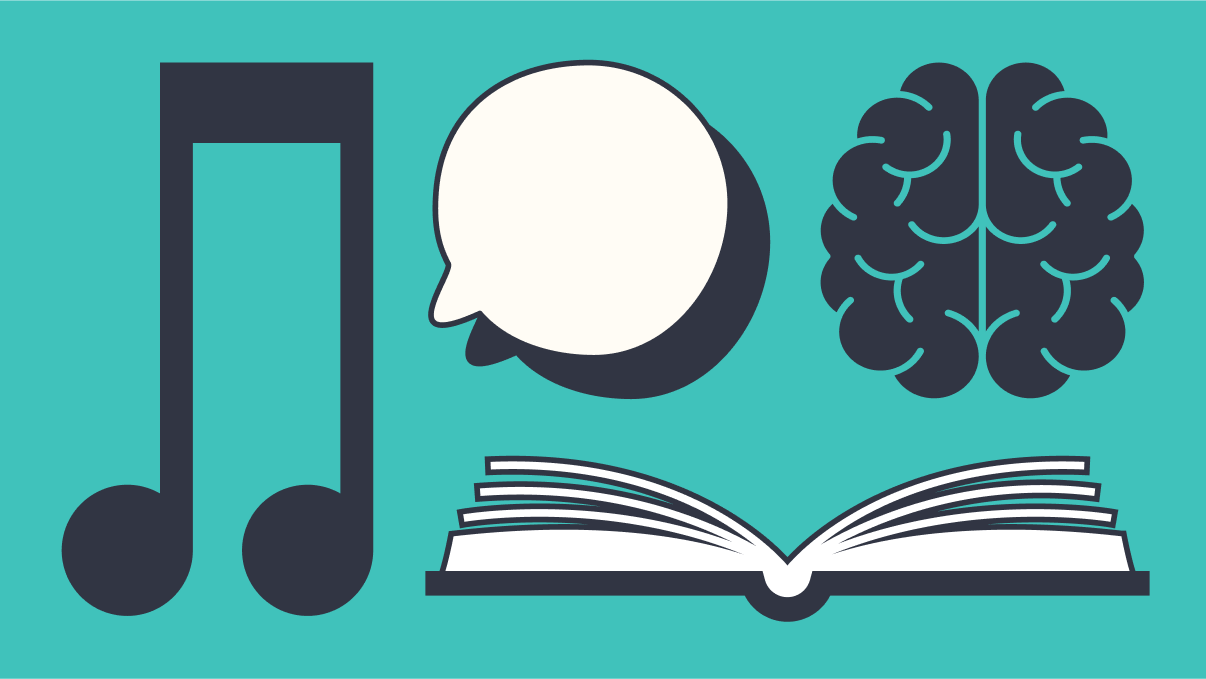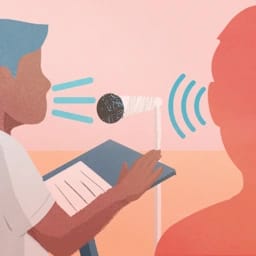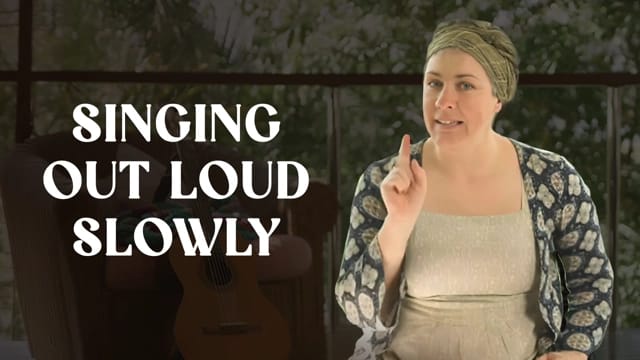4 Auditory learning strategies for teachers
In this guide
Auditory learning describes the type of learner that prefers and is most successful when using auditory skills to take in and process information. This could look like discussions, audiobooks, music, etc. Ultimately, it encompasses anyone who learns best when sounds are used in the presentation of a topic.
How do you remember the order of the alphabet? I would be surprised if you said anything besides the alphabet. Heck, I’m in my mid 40’s and I still sing this song in my head if I need to remember the order. When were we taught this song? Reception, maybe year 1. And it is ingrained in our memory.
And what about little rhymes/chants/songs to memorise multiplication facts? Or a musical game to remember the names of your classmates? Let’s not forget the classic song, “Heads, Shoulders, Knees and Toes” to learn our body parts.
All of these are examples of fun activities set to catchy tunes that help students remember a key concept they need to learn. And they work. Why? Because studies have shown that adding music to words helps with learning and retention. This is for all students, but especially Auditory Learners.
Nursery Rhyme Teaching Resources
Celebrate the importance of nursery rhymes with videos and teaching resources for your students.
What is an auditory learner?
An auditory learner is someone who learns most effectively through sound, music, discussion and other approaches that are related to speaking and listening. They benefit most from hearing and talking about the concepts, versus just reading and watching.
The following chart illustrates the Auditory Learner, and what characteristics and preferences might be observed. It also identifies strengths and struggles for those who are auditory learners. Note the learning tips as well.

Visual vs. auditory learning
So, what are the differences and similarities between being a visual learner versus an auditory learner? Visual and auditory learners both use their senses to absorb and retain information.
However, where visual learners prefer learning through pictures, images, maps, diagrams, etc., auditory learners learn best through sound, music, discussions and other oral approaches.
4 Auditory learning strategies I use in the classroom
You might be wondering, how can we use these concepts to help support our auditory learners in the classroom. What might help them feel more confident?
Below, you will find various strategies that educators could find beneficial when seeking ideas that have been proven successful with auditory learners:
1) Using music in the classroom
As mentioned above, fun little songs can help students understand and recall information for just about any subject. It’s all about a song that is catchy and repetitive. This will cement the concepts and help them (especially auditory learners) learn and remember what is being taught.
This could be done through a recorded song that is played, or it could be a teacher-created tune. Musical instruments (or even drumming on desks or their lap!) could be incorporated, to allow students to get involved in the music. Or, just having a piece of music playing while students are working can be something that some learners would find useful. But no matter which approach, using music is a great teaching tool.
2) Class discussion
No matter the age, students can benefit from participating in discussions in the classrooms. This encourages children to express themselves, learn from others, develop their social skills and hear other opinions or perspectives. As students get older discussions may also evolve into debates.
Class discussions can look many ways. One way would be with the whole class. This is where the teacher leads the conversation, perhaps posing a question or making a statement, and then inviting students to take turns sharing their thoughts, answers, and ideas.
This could be done through a random approach of pulling names or calling on table/group numbers and someone at that table must speak, or having students raise their hands to be called on. One benefit to this activity is that there are many opportunities for students to have their voices heard. And from the teacher’s perspective, it can feel organised and controlled. Only one student would be speaking at once, and the class is seated and waiting for their turn to speak. It would also be easy to monitor who is participating and who is not.
However, a whole class discussion may be intimidating or overwhelming for some students. Even if they are auditory learners, some might find it hard to wait their turn and not blurt out, which could be too difficult to process or learn.
Another approach would be small groups. This would look like students grouped in perhaps four to five students, with desks clustered or students sitting together.
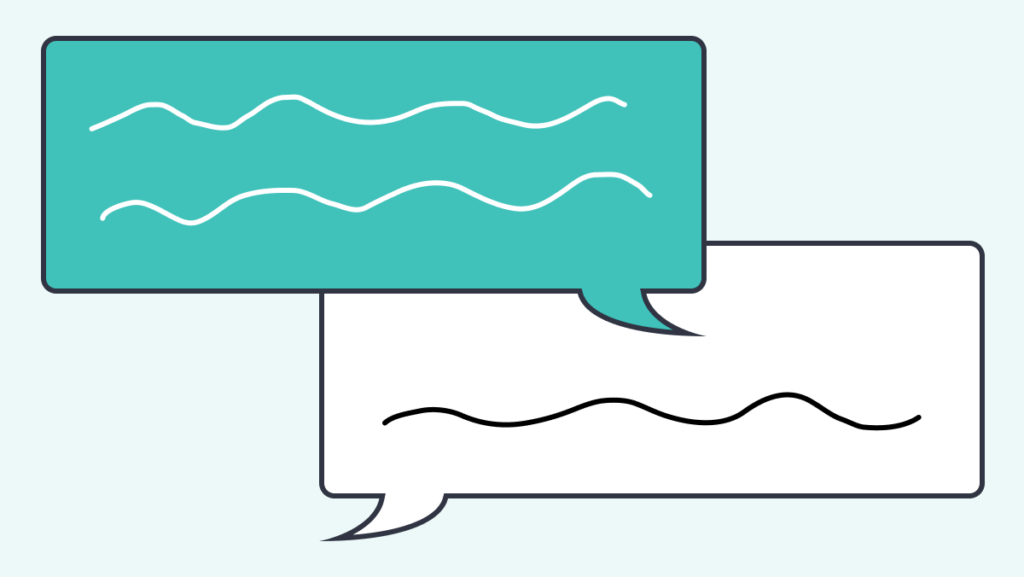
The class would be divided, based on a variety of factors based on teacher discretion or the purpose of the activity (grouping examples: ability, topic, strengths, to mix up social groups, or perhaps random), but would all be expected to discuss at the same time as other groups. This gives the teacher a chance to take a step back and “guide from the side”, and let students take the reigns. The advantage of this technique is that students may feel more comfortable in a smaller setting, and less embarrassed or scared to take risks. The auditory learners may find that they can hear the responses easier, and share their thoughts in a smaller setting.
However, a disadvantage might be that there would be several groups participating in discussions at the same time, which could increase the volume and sensory overload. One way to remedy this would be if the teacher has the space to spread the groups out as far as possible, perhaps with some in a hallway or different space (with ample monitoring, of course. This may work best with older and more responsible or attentive students). Another tool that can be used during group discussions would be to give students specific roles (monitor, recorder, etc.), so everyone is clear of the expectations during the discussion.
For me, I took a sort of hybrid of both ways. As a teacher, I used discussions and debates regularly, in both English and History. I would pose an open-ended question at the beginning of class, encouraging students to start by sharing their thoughts with their table groups. Then, I would open it up to the entire class. The insight and perspectives I heard were incredible. It gave the students a safe place to share ideas and opinions at the small group level, before sharing their thoughts with the entire class. This benefitted all students.
3) Mindfulness
Another way that auditory learners could discover opportunities for learning or self-expression would be through mindfulness and social-emotional learning (SEL) activities. There are many ways where sound (music, singing, humming, rhythm, etc.) can be used to help guide students to be self-aware and reflective.
And although this would be especially helpful for the auditory learners because of their tendency to use sound to learn and express themselves, all students could possibly benefit from the following activities:
Videos:

4) Read-alouds and audiobooks
We all know that children have books read to them at a very young age. Picture books are incorporated into the curriculum, beginning in preschool. Books can be an excellent resource for all subjects (examples: a picture book about friendship in Reception, a historical fiction book about World War II in a secondary school History class). Books can help with making connections, providing examples, helping students have a deeper understanding, and even just making the content more interesting and/or personal.
One way to use the idea of books to help support our auditory learners would be to use read-aloud and audiobooks. These are versions of books where the story is read out loud, either by someone in the room or it has been recorded.
Here are some examples:
I believe this can be wonderful for any year level. Really. From Reception to Year 11s, students of all ages can benefit from hearing a story or book read to them. It helps with fluency, reading patterns, pacing, tone, cadence, etc. It also provides the teacher with complete control of when they pause to discuss, explain or ask questions.
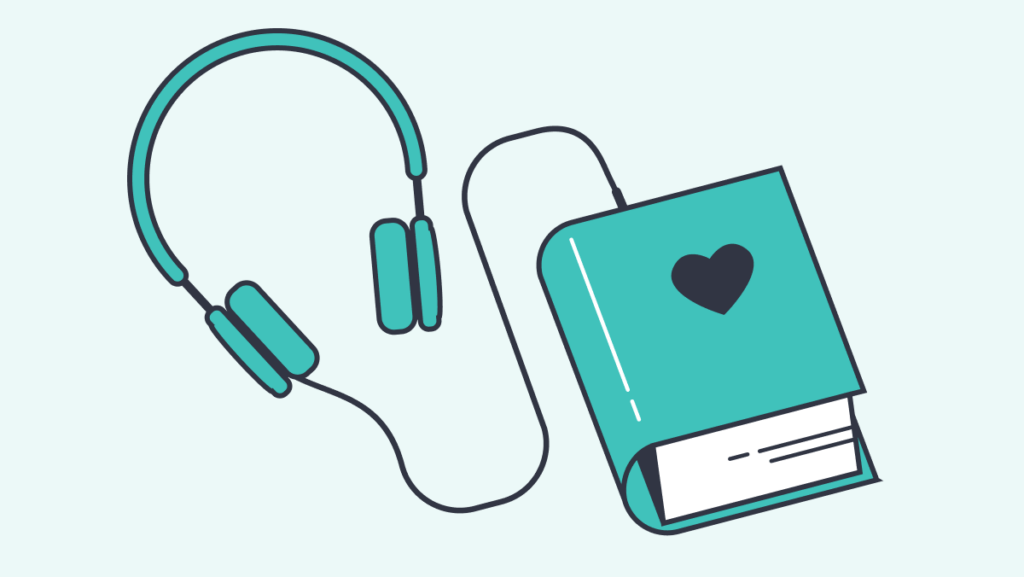
Another great technique is to have students read a book out loud to themselves or a partner. This helps students practise those reading fluency skills, as they hear themselves reading the book. Auditory learners will have a chance to use both speaking and listening skills to strengthen their abilities and retain information.
So, yes. These could work for all year groups. I have read picture books to year 1 students who are all sitting in a semi-circle on a carpet. But, I have also read novels to students in secondary school classrooms. I am especially an advocate for reading to the older students, as some people seem to feel that only younger children benefit. This is simply not true. I have sat at the front of my classroom, reading an autobiography from a Holocaust survivor to year 9 English students, and watched them sit at their desks, completely enthralled and invested in every word I was reading.
And likewise, allowing students to listen to audiobooks being read by the author (or a different narrator) can have an amazing impact on their understanding, especially if they are auditory learners. As they listen to the book being read, the story comes alive. The auditory learner can absorb and process the details in a way that is far more impacting than looking at the words on a page.
Advantages of auditory learning
As previously mentioned, using speaking and listening activities can benefit all students, but especially the auditory learners. The way they understand and learn best is through sound, both hearing and creating them.
There are many advantages to this learning style.
- The world is full of noise. From music to talking, people express themselves through sound. And auditory learners will be able to use those sounds to process their world.
- Words put to music are more likely to be remembered. Most people can recall songs they were taught when they were very young.
- Being an auditory learner invites a lot of opportunities for socialisation and interaction with others. These are essential skills in the world, especially as these learners become adults.
- Using music in the classroom can help expand the learning experience.
- Studies have been done on how music impacts our memory. It has been discovered that those who suffer from dementia or Alzheimer’s were able to recall memories, skills, etc. once they were exposed to particular pieces of music.
To sum it all up
So, here’s the deal. Auditory learners thrive when they can hear, speak and interact with their learning in ways that include sound. They are way more likely to find success when they can do this. And numerous studies prove this.
There are even more activities and suggestions than what I mentioned in this article, but these are a great start.
The beauty of these strategies is that they can be helpful to all students. So, even though the original purpose is to support our auditory learners, I would encourage you to attempt them with your entire class.
References
- “The Hidden Power of Read Alouds.” 2022. ASCD. https://www.ascd.org/el/articles/the-hidden-power-of-read-alouds
- “What is a read-aloud?” n.d. The Daily Alphabet. Accessed April 22, 2024. https://thedailyalphabet.com/what-is-a-read-aloud
- “Work Ready Training. What’s your learning style: Auditory learner?” 2018. Work Ready Training. https://www.workreadytraining.com.au/whats-your-learning-style-auditory-learner

Rebecca Robison
briefcase iconEducational Consultant/Middle School Teacher
Rebecca Robison is a former teacher with over 20 years of experience, ranging from 1st grade to 8th grade, and in multiple subjects. She retired from teaching in 2023, and has been working for ClickView ever since as an Educational Consultant and Blogger.
Other posts
Want more content like this?
Subscribe for blog updates, monthly video releases, trending topics, and exclusive content delivered straight to your inbox.

